How to Sleep Better During Seasonal Changes
Rebalancing Your Rhythm When the Weather Shifts
When the seasons change, so does your body. You might notice it in your mood, your appetite, or — most noticeably — your sleep. 🌦️
In spring, early sunlight can make you wake up too soon. In fall, darker evenings can bring fatigue or even seasonal depression. And winter’s chill often comes with heavier sleep and lower motivation.
This isn’t your imagination — your body’s circadian rhythm, the internal 24-hour clock that regulates sleep, energy, and hormones, is deeply influenced by the seasons.
If your sleep feels disrupted each time the weather turns, you’re not alone. The shift in light exposure, temperature, and daily activity affects everything from melatonin production to mood-regulating neurotransmitters like serotonin.
In this article, you’ll learn how seasonal transitions affect your sleep, what you can do to adapt naturally, and how to use nutrition, supplements, breathwork, and therapy to restore your body’s inner rhythm — no matter the season. 🌸❄️☀️🍂
🧭 Why Seasonal Changes Affect Sleep
Your sleep patterns are guided by your circadian rhythm, which is regulated primarily by light and temperature. When these change, your brain adjusts hormone levels to maintain balance — but this adaptation doesn’t happen instantly.
🌤️ Light Exposure and Melatonin
Melatonin — the hormone that signals your brain it’s time to sleep — is produced in darkness.
When days get shorter (fall/winter), your brain releases melatonin earlier, making you sleepy sooner. When days get longer (spring/summer), melatonin release delays, making it harder to fall asleep.
💡 Result: You may struggle with insomnia in summer or oversleeping in winter.
🌡️ Temperature Shifts
Your body sleeps best in slightly cool conditions (around 18°C / 65°F).
But when the temperature outside rises or falls dramatically, it can take time for your body to regulate its core temperature for ideal rest.
Summer: Too much heat → poor REM sleep.
Winter: Too much cold → restless movement or nighttime waking.
🌧️ Seasonal Affective Disorder (SAD)
In fall and winter, reduced sunlight can lower serotonin, increasing the risk of Seasonal Affective Disorder (SAD) — a type of depression linked to light deficiency.
Symptoms often include:
Fatigue despite long sleep hours
Increased appetite or carb cravings
Mood dips or emotional flatness
💬 SAD directly affects your circadian rhythm and sleep quality.
🌸 Environmental Allergies and Spring Fatigue
Spring allergies can cause nasal congestion and inflammation that interfere with breathing during sleep.
The immune response itself — the body’s natural inflammation cycle — can make you feel unusually tired even after a full night’s rest.
🍂 Behavioral Shifts
Longer days often lead to social events, caffeine intake later in the day, or irregular sleep times.
Shorter days, on the other hand, can make you more sedentary and disrupt your body’s energy calibration.
✨ In short: Each season asks your body to relearn balance — light, temperature, hormones, and behavior must all re-synchronize.
🌙 Common Sleep Struggles by Season
| Season | Typical Sleep Issue | Root Cause |
|---|---|---|
| Spring | Difficulty falling asleep | Extended daylight, pollen allergies |
| Summer | Light, fragmented sleep | Heat and late sunsets |
| Fall | Early sleepiness, grogginess | Shorter days, lower serotonin |
| Winter | Oversleeping, fatigue | Low light, SAD, indoor inactivity |
🧠 How to Rebalance Your Sleep Cycle Naturally
Your circadian rhythm is resilient — it adapts beautifully when given the right cues.
Here’s how to reset it during each seasonal shift.
☀️ Prioritize Light Exposure at the Right Times
Light is your circadian clock’s most powerful regulator.
Morning sunlight: Spend 10–20 minutes outside within an hour of waking. This suppresses melatonin and increases serotonin — improving alertness and mood.
Evening darkness: Dim lights 1–2 hours before bed. Avoid screens that emit blue light, which delays melatonin release.
Winter tip: Use a 10,000-lux light therapy lamp in the morning to mimic natural sunlight.
💬 Your body reads light as time. Control the light, and you control your rhythm.
🌡️ Keep a Cool, Consistent Bedroom
Temperature consistency helps your brain know it’s bedtime.
Summer: Use breathable bedding, a fan, or cooling mattress pads.
Winter: Layer light blankets and use a humidifier to combat dry air.
All seasons: Aim for 17–19°C (63–66°F).
✨ Pro tip: Take a warm shower 60–90 minutes before bed — your body cools afterward, mimicking the natural drop that induces sleep.
🕯️ Create Seasonal Bedtime Rituals
Routine teaches your body what to expect.
Adjusting your nighttime ritual for each season helps anchor your sleep rhythm.
🌸 Spring
Brew chamomile or lemon balm tea for calming allergies and reducing tension.
Add lavender oil to your pillow for gentle aromatherapy.
☀️ Summer
Switch to lighter teas like peppermint or rooibos.
Use blackout curtains to block late sunlight.
🍂 Fall
Try magnesium glycinate in warm milk to balance melatonin.
Journal or stretch to release mental and physical tension.
❄️ Winter
Use red-spectrum lighting to simulate firelight.
Enjoy a tart cherry smoothie — one of nature’s best melatonin boosters.
🧘 Breathwork to Regulate Seasonal Stress

The nervous system reacts strongly to environmental change. Breathwork can help you restore calm and improve sleep quality year-round.
🌬️ Try This “Seasonal Reset” Breathing Exercise
Sit or lie comfortably.
Inhale through the nose for 4 seconds.
Hold for 4 seconds.
Exhale through the mouth for 6–8 seconds.
Repeat for 5 minutes before bed.
💨 This stimulates your vagus nerve, activating your parasympathetic (rest-and-digest) state.
✨ Pair this with lavender or frankincense aromatherapy for enhanced grounding.
🩵 Supplements for Seasonal Sleep Balance
Light and temperature shifts alter neurotransmitters. These supplements can help your body stabilize naturally.
| Supplement | Function | Best Season | Notes |
|---|---|---|---|
| Vitamin D3 | Boosts serotonin and circadian rhythm | Fall/Winter | Low sunlight reduces D levels |
| Magnesium Glycinate | Relaxes muscles, supports melatonin | All | Take 200–400 mg before bed |
| Melatonin | Regulates sleep onset | Spring/Summer | Use short-term only (0.3–1 mg) |
| L-Theanine | Promotes alpha brain waves | All | Excellent for calming pre-sleep anxiety |
| Ashwagandha | Lowers cortisol | Fall/Winter | Helps with seasonal stress and SAD |
💡 Choose food sources first — supplements should enhance, not replace, your rhythm.
🍎 Nutrition for Seasonal Sleep
Your diet also influences your body’s response to changing light and temperature.
🌸 Spring & Summer Foods
Focus on hydration and cooling nutrients:
Kiwi, watermelon, cucumber, leafy greens
Herbal teas (mint, lemon balm, hibiscus)
Avoid spicy or heavy meals before bed
🍂 Fall & Winter Foods
Support serotonin and melatonin synthesis:
Tart cherries, pistachios, oats, brown rice
Warm soups, root vegetables, bananas
Herbal teas with chamomile, valerian, or ashwagandha
✨ Pro tip: Avoid alcohol and caffeine after 2 p.m. — they disrupt melatonin cycles.
🧘 Therapy and Emotional Adaptation
Seasonal shifts affect not just sleep, but also emotion. Shorter days and colder months can heighten anxiety or sadness, which indirectly interferes with rest.
Therapy can help you regulate your emotional circadian rhythm — the internal cycle of calm, engagement, and restoration.
🌿 Cognitive Behavioral Therapy (CBT-I)
Teaches you to reframe anxious thoughts about sleep or seasonal fatigue.
💗 Somatic Therapy
Helps release body-held tension that prevents full relaxation.
🌸 Light Therapy Integration
Combines mood and behavioral support with structured light exposure routines.
💬 When you pair therapy with light management, your brain relearns how to transition between seasons without losing balance.
🌞 Morning Routines That Support Sleep at Night
What you do after waking determines how you’ll sleep later.
Get sunlight within 30 minutes of waking — even on cloudy days.
Move your body — stretching, walking, or light yoga to reset cortisol.
Eat a protein-rich breakfast — supports serotonin and hormone stability.
Avoid long naps (>30 min) during transitions between seasons.
💡 Morning behaviors are “circadian anchors” — they help your body feel aligned from sunrise to sunset.
🌙 Sleep Hygiene for Every Season
Simple environmental adjustments can make your sleep more consistent year-round.
🛏️ Optimize Your Bedroom
Keep it dark, cool, and quiet.
Replace heavy bedding in summer with breathable cotton or linen.
Use warm, textured blankets in winter for comfort and grounding.
📵 Digital Detox
Avoid screens 1 hour before bed.
Try reading, journaling, or meditation instead.
If needed, use blue-light filters or amber glasses.
💧 Stay Hydrated
Dehydration can raise nighttime heart rate, making it harder to rest.
Drink enough water during the day, but taper off 1–2 hours before bed.
🌺 The Role of Movement
Physical activity is one of the strongest tools to stabilize circadian rhythm.
Seasonal changes often reduce outdoor time, so find ways to stay active indoors.
🏃 Seasonal Exercise Tips
Spring/Summer: Walks before sunset, light resistance training.
Fall/Winter: Morning movement or indoor yoga.
Bonus: Exercise boosts serotonin — which converts to melatonin later in the evening.
💬 Movement in daylight equals better sleep at night.
🕯️ Evening Ritual for All Seasons
Here’s a universal evening ritual to reset your body’s natural rhythm:
🩵 90 Minutes Before Bed
Dim lights, silence notifications.
Drink herbal tea (chamomile or tart cherry).
Journal gratitude or emotional reflections.
🌿 30 Minutes Before Bed
Do 5 minutes of deep breathing or light stretching.
Take magnesium glycinate or sip warm milk.
🌙 At Bedtime
Play soft ambient music or white noise.
Keep your phone out of reach.
Focus on slow, rhythmic breathing as you drift off.
✨ Over time, this trains your brain to associate these rituals with safety and rest — even during unpredictable seasonal shifts.
⚖️ When to Seek Professional Support

If your sleep issues persist beyond 2–3 weeks despite healthy adjustments, consider:
Sleep study (polysomnography): to check for sleep apnea or movement disorders.
Hormone or vitamin tests: to assess melatonin, cortisol, and vitamin D.
Therapeutic support: if seasonal depression or anxiety feels overwhelming.
💬 It’s not weakness to seek help — it’s wisdom. Your body and mind are systems that deserve maintenance, not judgment.
❤️ The Takeaway
Seasonal changes can be disorienting, but they’re also opportunities to realign with nature’s rhythm. 🌍
Your body already knows how to adjust — it just needs your cooperation.
By honoring light cycles, nourishing yourself with calming foods, using breathwork, and maintaining steady rituals, you can move through every season with ease.
Sleep is nature’s most ancient medicine — and when you move in rhythm with the seasons, it becomes effortless again.
🌙 Each season has its own lullaby — your job is simply to listen.
📚 References
Cajochen, C. et al. (2010). Seasonal changes in sleep and melatonin secretion in humans. Sleep Medicine Reviews.
Walker, M. (2017). Why We Sleep: Unlocking the Power of Sleep and Dreams. Scribner.
Golden, R. N. et al. (2005). The efficacy of light therapy in seasonal affective disorder. American Journal of Psychiatry.
Irwin, M. R. (2019). Sleep and inflammation. Nature Reviews Immunology.
Pandi-Perumal, S. R. et al. (2006). Melatonin: Nature’s most versatile biological signal. FEBS Journal.
Wurtman, R. J. (2008). Effects of light on human circadian rhythms. Annual Review of Nutrition.
American Psychological Association. (2023). Cognitive Behavioral Therapy for Insomnia (CBT-I).
Riemann, D. et al. (2020). The interplay between circadian rhythm and sleep disorders. Journal of Sleep Research.
Jerath, R. et al. (2015). Neural mechanisms linking breathwork, emotion, and relaxation. Frontiers in Human Neuroscience.
Kasper, S. et al. (2010). Light therapy and vitamin D in seasonal affective disorder. European Neuropsychopharmacology.
Related Posts
-

Supplements to Stay Calm Before Public Speaking
Breathwork is one of the simplest yet most powerful tools for calming pre-performance stress 🌬️. By slowing and deepening your breathing, you lower cortisol, steady your heartbeat, and re-center your mind. Learn the science behind how controlled breathing activates your parasympathetic nervous system — helping you speak, perform, or focus with grounded confidence. 🌿
-
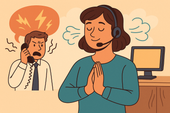
How to Handle Customer Service Stress Without Losing Your Cool 💬🧘♀️
Customer service can test even the calmest person’s patience. 😤 Learn how to handle difficult clients and daily pressure without losing your cool — through better mindset management, calming breathwork, and practical communication tools. Stay grounded, protect your energy, and transform stress into strength. 🌿
-
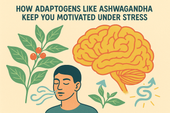
How Adaptogens Like Ashwagandha Keep You Motivated Under Stress
Feeling overwhelmed and unmotivated? 🌿 Discover how adaptogens like Ashwagandha can help you stay centered, focused, and energized under stress. Learn how supplements, breathwork, and therapy work together to restore your natural motivation and help you thrive — even during life’s toughest moments. 💪✨
-
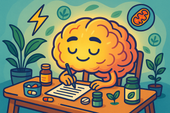
Supplements That Support Long-Term Productivity Without the Crash ⚡🌿
Cortisol — your body’s main stress hormone — can be both your best friend and worst enemy. ⚡ When balanced, it keeps you focused, energized, and ready to act. But when it stays high for too long, it leads to fatigue, anxiety, and emotional crashes. Learn how to regulate cortisol naturally through supplements, sleep, and stress management to maintain calm, steady productivity. 🌿
-
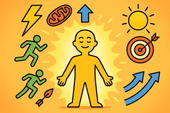
Why Energy Levels and Motivation Go Hand in Hand ⚡🧠
B-vitamins are the brain’s spark plugs 🔋. They turn food into fuel, support neurotransmitter production, and keep your mood, energy, and focus balanced. Learn how vitamins like B6, B9, and B12 work together to power the nervous system, reduce fatigue, and keep motivation high. 🌿
-
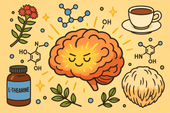
The Science of Motivation: Can Nootropics Help You Stay Focused? 🧠⚡
Nootropics are nature’s tools for sharper thinking and sustainable focus 🧠🌿. From Rhodiola and Lion’s Mane to L-theanine and Bacopa, these brain-boosting compounds enhance motivation, memory, and stress resilience. Learn the science behind how nootropics work — and how to use them safely for peak mental performance and clarity. ⚡
-

How Natural Supplements Can Boost Your Daily Drive
Cortisol is your body’s main stress hormone — powerful, necessary, but often misunderstood. ⚡ When balanced, it keeps you alert and energized; when chronically elevated, it drains mood, motivation, and focus. Learn how to regulate cortisol naturally through nutrition, supplements, and calming lifestyle habits for steady energy and emotional balance. 🌿
-
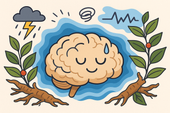
Ashwagandha for Stress and Low Mood
Breathwork is more than a relaxation tool — it’s a way to rewire your nervous system. 🌬️ Through intentional breathing, you can reduce stress hormones, improve focus, and calm emotional turbulence. This guide explores the science of breathwork and its powerful effects on mental clarity, resilience, and emotional regulation. 🌿
-

Mood-Boosting Smoothie Recipes
Your blood sugar affects far more than energy — it influences mood, focus, and emotional stability too 🍎. Learn how maintaining balanced glucose levels supports brain health, reduces anxiety, and prevents emotional crashes. Discover the foods and habits that keep your mind calm and your energy steady throughout the day. 🌿
-
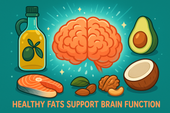
How Healthy Fats Support Brain Function
Your brain thrives on healthy fats 🧠💧. From omega-3s to MCTs, the right fats enhance focus, memory, and mood while protecting against inflammation and aging. This article explores how good fats — like those from olive oil, salmon, avocado, and nuts — build sharper thinking, emotional balance, and lasting brain vitality. 🌿
-
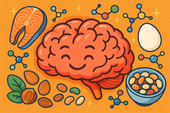
The Role of Protein in Mental Clarity
Protein isn’t just for muscles — it’s for your mind. 🧠 This guide explores how amino acids from high-quality protein fuel neurotransmitters, stabilize mood, and sharpen focus. Learn how balanced protein intake supports dopamine, serotonin, and energy regulation to boost mental clarity and emotional stability naturally. 🍳🌿
-
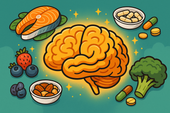
Nutrients That Support Emotional Stability
Your emotions are built from nutrients as much as from thoughts 🌿. This science-backed guide reveals the vitamins, minerals, and healthy fats that stabilize mood and reduce stress — from B-vitamins and magnesium to omega-3s and probiotics. Learn how balanced nutrition supports neurotransmitters, strengthens resilience, and promotes lasting calm and clarity 🧠✨.
-
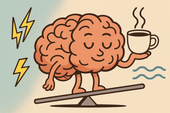
How Caffeine Affects Your Mood ☕
Your morning coffee might lift your spirits — but what’s really happening inside your brain? ☕ This in-depth guide explores how caffeine affects mood, motivation, dopamine, and stress. Learn how to enjoy caffeine mindfully without triggering anxiety, burnout, or emotional crashes. Discover the science behind your energy highs and lows — and how to find calm, sustainable focus. 🌿
-
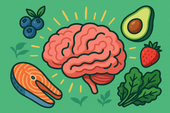
The Best Anti-Inflammatory Diet for Mental Health
Inflammation doesn’t just affect your body — it impacts your mood, focus, and emotional resilience too 🌿. This comprehensive guide reveals how an anti-inflammatory diet can support mental health by reducing neuroinflammation, balancing gut bacteria, and stabilizing blood sugar. Learn which foods to eat (and which to avoid) to protect your brain, boost serotonin, and promote lasting calm. 🧠✨
-

Why Sugar Spikes Can Worsen Depression
Sugar highs can make you feel good for a moment — but what comes next can fuel emotional crashes and deepen depression 🍭. This article explains how blood sugar spikes disrupt brain chemistry, increase inflammation, and destabilize serotonin. Learn how food, supplements, breathwork, and therapy can help you break the sugar–mood cycle and restore lasting emotional balance 🌿.
-

Foods That Naturally Boost Serotonin
Serotonin isn’t just a brain chemical — it’s your body’s built-in mood stabilizer 🌞. This in-depth guide explores how natural foods like salmon, eggs, bananas, and dark chocolate can elevate serotonin levels, while gut health, key nutrients, supplements, breathwork, and therapy create the perfect synergy for calm and emotional balance. Learn how to support your mind through diet, lifestyle, and mindset — naturally. 🌿
-
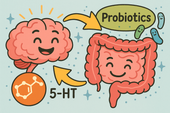
Probiotics for Mood Balance
-
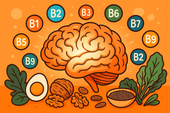
B-Vitamins and Their Role in Mental Health
Methylation is one of your body’s most important biochemical processes — influencing mood, energy, and focus. Powered by B-vitamins like B6, B9, and B12, it helps your brain create serotonin, detox efficiently, and maintain emotional balance. 🌿
-
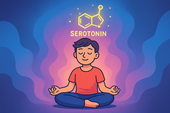
5-HTP for Serotonin Support
Calm isn’t just an emotion — it’s a physiological state where your body and mind finally sync in peace. By slowing your breath, softening your thoughts, and creating safety within, you restore the deep relaxation your nervous system craves. 🌿
-
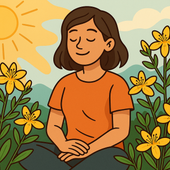
St. John’s Wort for Mild Depression
Antidepressants can be life-changing for many — but understanding how they work and what natural options like St. John’s Wort can complement them is key. Learn how both approaches affect brain chemistry, mood balance, and long-term emotional wellness. 🌿
-

SAM-e: A Natural Mood Booster
Emotional regulation is the art of staying calm and grounded, even when life feels chaotic. By balancing your brain, body, and breath, you can respond with clarity instead of reacting from stress — building real emotional resilience and inner peace. 🌿
-

Rhodiola Rosea for Emotional Resilience
Neuroplasticity is your brain’s ability to grow, adapt, and heal — even after stress or trauma. Every thought, emotion, and habit reshapes your neural pathways, helping you build stronger emotional resilience, sharper focus, and lasting mental balance. 🌿
-
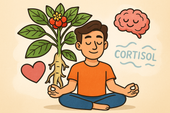
Ashwagandha for Stress and Low Mood
Adaptogens are nature’s stress balancers — powerful herbs like ashwagandha, rhodiola, and reishi that help your body adapt to tension, fatigue, and change. By regulating cortisol and supporting your nervous system, they build calm focus and emotional resilience from the inside out. 🌙
-
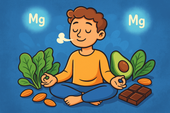
Magnesium’s Role in Emotional Regulation
Neuroscience helps us understand why we feel, think, and react the way we do. From brain chemistry and neural circuits to stress responses and emotional learning, the science of the brain reveals how our minds can heal, grow, and find balance. 🌿
-
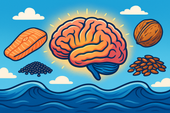
Omega-3 Fatty Acids and Emotional Well-Being
Nutrients aren’t just fuel — they’re communication signals that tell your brain and body how to function. From magnesium and vitamin D to omega-3s and B vitamins, the right mix of nutrients helps calm your mind, balance hormones, and support emotional and physical well-being. 🌙
-

The Role of Tryptophan in Sleep Health
Mental health isn’t just the absence of illness — it’s the foundation of calm, focus, and emotional resilience. From managing stress and anxiety to nurturing self-compassion, understanding your mental well-being is the first step toward a balanced, more peaceful life. 🌿
-

Nutrients That Promote Nighttime Relaxation
Potassium does more than balance fluids — it also helps your body and mind relax at night. By calming nerves, reducing muscle tension, and supporting steady heart rhythm, potassium-rich foods like bananas, sweet potatoes, and coconut water can promote deeper, more restful sleep. 🌙
-

Sleep-Friendly Smoothie Recipes
Melatonin is your body’s natural sleep signal — a hormone that tells your brain when it’s time to rest. Learn how melatonin works, which foods and habits boost its production, and how to use it wisely for deeper, more restorative sleep without dependence. 💤
-
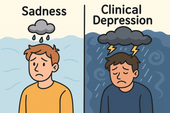
The Difference Between Sadness and Clinical Depression
Your emotions aren’t just in your mind — they’re written in your brain chemistry. Serotonin, dopamine, and GABA work together to regulate mood, motivation, and calm. When they fall out of balance, you may feel anxious, fatigued, or low. Learn how these brain chemicals influence your mental health and what you can do to restore harmony naturally. 🌿
-
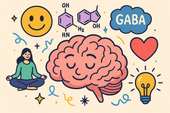
How Brain Chemistry Influences Mood
Your brain is a symphony of neurotransmitters — serotonin, dopamine, GABA, and more — working together to shape how you think and feel. When they’re balanced, you experience calm focus and emotional stability. When they’re not, mood swings and fatigue can follow. Learn how to naturally support these vital messengers for better mood and mental clarity. 🌿
-
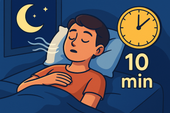
How to Fall Asleep in Under 10 Minutes
The military knows a few secrets about falling asleep fast — and they work even in chaos. This article explores the science behind rapid relaxation, including the famous “Military Sleep Method,” which teaches your body to shut down stress and rest on command. Learn how discipline, breath, and focus can help anyone fall asleep in minutes. 🌙
-
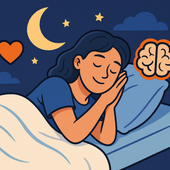
Why Emotional Resilience Improves Sleep
Emotional resilience isn’t just about mental strength—it’s also a key ingredient for better sleep. When your emotions are balanced, your body releases fewer stress hormones, your mind quiets faster, and your sleep becomes deeper and more restorative. Learn how to cultivate calm through mindset, breathwork, and daily habits. 🌙
-
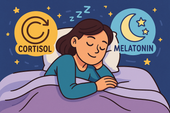
The Connection Between Stress Hormones and Sleep
Chronic stress can quietly reshape your body’s chemistry, raising cortisol, disrupting sleep, and draining your energy. This guide explores how long-term stress affects your nervous system, hormones, and rest—and how to restore calm through breathwork, nutrition, and daily recovery rituals. 🌿
-
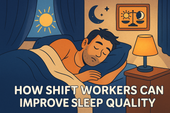
How Shift Workers Can Improve Sleep Quality
For shift workers, caffeine can be both a lifeline and a sleep disruptor. Learn how to use it strategically—boosting alertness during work hours without sabotaging rest. This guide explores timing, dosage, and smarter natural alternatives to keep your energy steady and your sleep restorative. 🌙
-
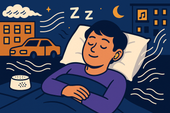
How to Sleep Better in a Noisy Environment
Living in a noisy area doesn’t mean sacrificing your rest. Learn practical and natural strategies to sleep better in loud environments—from using sound masking and breathwork to creating calming rituals that help your brain tune out the chaos. Find inner silence even when the world outside won’t quiet down. 🌙
-

Natural Solutions for Restless Leg Syndrome (RLS)
Struggling to sleep deeply and wake refreshed? This soothing guide explores how the body restores itself during quality sleep—and how to support it naturally. Learn about the science of rest, the role of nutrients, and the rituals that promote deep, uninterrupted slumber. 🌙
-
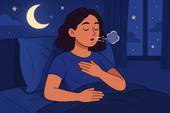
How to Overcome Middle-of-the-Night Anxiety
Middle-of-the-night anxiety can make even the calmest mind spiral into worry. This guide reveals practical, evidence-based techniques to help you stop the 3 A.M. overthinking loop—from breathwork and journaling to herbal supplements and therapy-based tools. Learn to retrain your nervous system and find peace when the world is asleep. 🌙
-
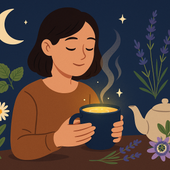
The Perfect Evening Herbal Blend
Discover the calming power of nature in your teacup. The perfect evening herbal blend combines chamomile, lemon balm, lavender, and adaptogens like ashwagandha to relax your body and quiet your mind before bed. Learn how to craft and customize a soothing, sleep-enhancing tea ritual that helps you unwind, restore, and wake up refreshed. 🌙
-
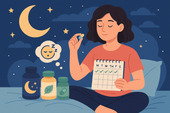
How to Cycle Sleep Supplements for Maximum Effectiveness
Wondering why your sleep supplements stop working after a while? This guide breaks down how to cycle sleep aids like melatonin, magnesium, and ashwagandha for consistent, long-term results. Learn when to rest your body, how to prevent tolerance, and what natural methods—like breathwork and therapy—enhance your sleep cycles. 🌙
-
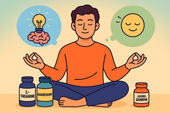
The Best Supplements for Both Relaxation and Focus
Calm your mind and sharpen your focus with the perfect blend of natural supplements. From L-theanine and magnesium to Rhodiola and Lion’s Mane, this science-based guide shows how to achieve relaxation and clarity at the same time. Discover stacks that support your nervous system, balance mood, and keep your mind laser-focused without the crash. 🌿
-
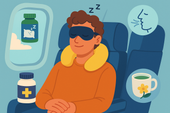
How to Sleep Better During Travel
Traveling can be thrilling—but sleepless nights can ruin even the best trips. From supplements like magnesium and melatonin to soothing breathwork and therapy-based techniques, this guide shows you how to sleep deeply on planes, in hotels, or across time zones. Learn to calm your body, reset your circadian rhythm, and build rest rituals that work anywhere in the world 🌙
-
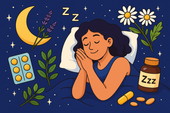
Improving Sleep in Menopause with Supplements
Menopause can make peaceful sleep feel impossible — but balance is within reach 🌿. This article explores how supplements like magnesium, ashwagandha, and black cohosh can ease night sweats, calm the mind, and restore your natural sleep rhythm during hormonal changes.
-
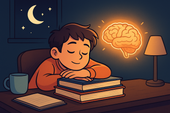
Sleep Support for Students During Exams
Exam stress can make it hard to rest — but sleep is what helps you perform your best 💤. This article explains how to improve sleep quality during exams through better study habits, natural supplements, breathwork, and therapy tools to calm the mind and sharpen focus.
-

Rest Strategies for Entrepreneurs
Entrepreneurs often burn out chasing their vision — but rest is the real fuel for success 🌙. This article explores science-backed recovery strategies for founders, including sleep, breathwork, therapy, and nutrition techniques that sharpen creativity and sustain performance.
-

How Sleep Affects Athletic Recovery
Sleep is where strength is built. 💤 This article explores how deep sleep drives muscle recovery, hormonal balance, and athletic performance — plus how supplements like magnesium, melatonin, and ashwagandha can enhance overnight repair and boost training results.
-

Better Sleep for People with Chronic Pain
Living with chronic pain makes sleep feel impossible — but it’s not. 🌙 This article explores how pain disrupts rest and how to rebuild your sleep through gentle breathwork, calming nutrition, therapy, and supplements that help your body relax and heal.
-

Foods That Naturally Boost Melatonin
Want to fall asleep faster without supplements? 🌙 This article explores how foods like tart cherries, pistachios, and kiwi naturally boost melatonin, the hormone that regulates sleep. Learn how to build an evening meal plan — plus simple rituals like breathwork and herbal tea — to improve rest and reset your circadian rhythm.
-

The Role of Herbal Tea in Relaxation
Herbal tea is more than comfort in a cup 🍵 — it’s nature’s gentle way to calm the mind and relax the body. This article explores how teas like chamomile, lavender, and lemon balm support stress relief, sleep quality, and emotional balance — plus how to pair them with magnesium, breathwork, and mindful rituals for deeper peace.
-

Lavender Extract and Its Calming Effects
Lavender extract is one of nature’s most soothing remedies 🌸. This article explores how lavender calms the nervous system, lowers cortisol, and improves sleep — plus how to combine it with magnesium, breathwork, and therapy for deep relaxation and emotional balance.

















































